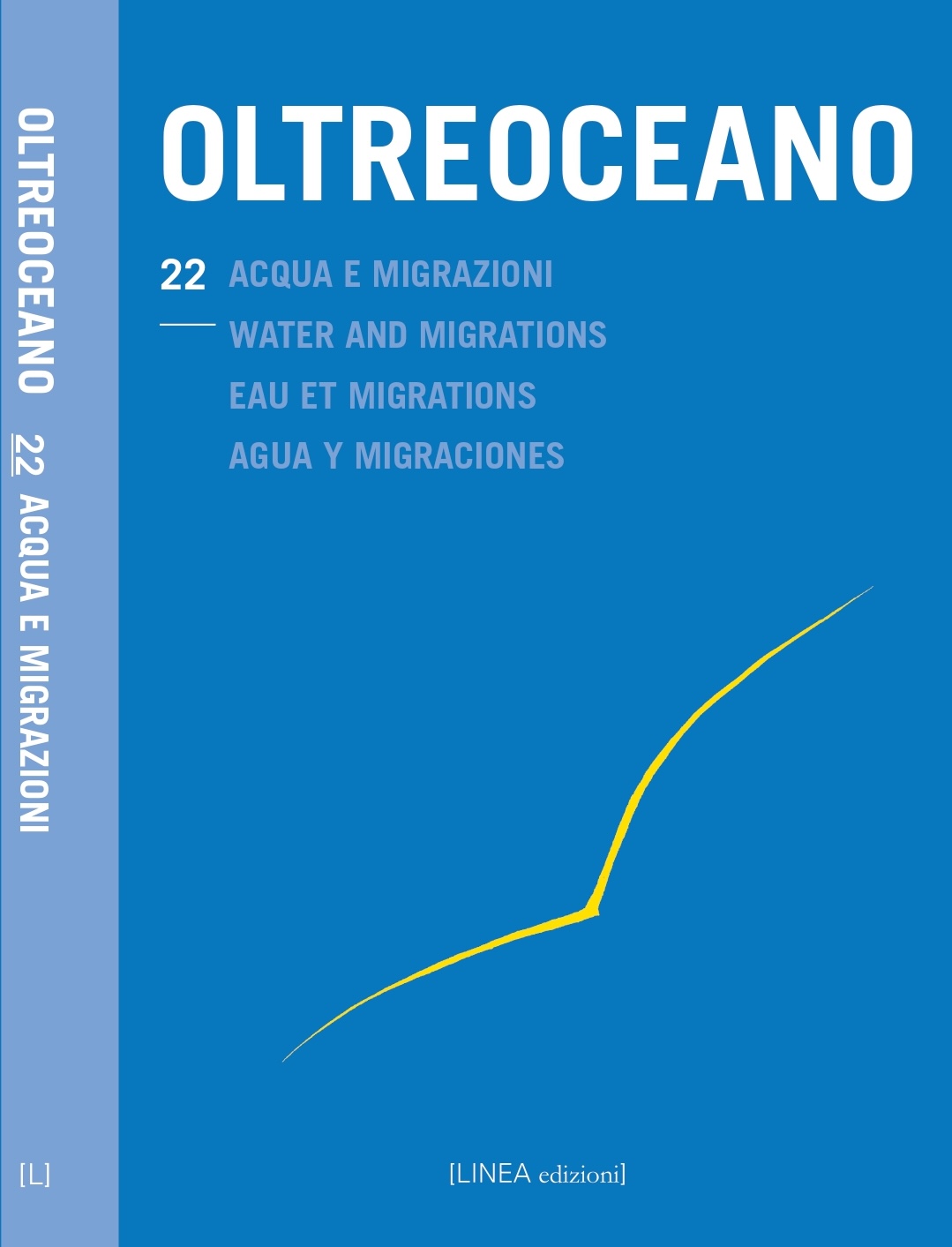The Sea as Death and Freedom in Reinaldo Arenas’s El mundo alucinante
DOI:
https://doi.org/10.53154/Oltreoceano88Keywords:
Rewrite, Exile, Sea, Death, LibertyAbstract
The life of Friar Servando Teresa de Mier Noriega y Guerra, characterized by exile and peregrinations through different countries of the Old and the New World, has been fictionalized by the Cuban writer Reinaldo Arenas in his novel El mundo alucinante, which offers a hyperbolic representation of the friar’s feats. Starting from the condemnation issued by the Archibishop Haro y Peralta, Arenas focuses on how Servando was forced to cross the ocean several times, because of his irreverant choice to challenge ecclesiastical and political power. On December 12, 1794, for example, while preaching during the feast of Our Lady of Guadalupe, he asserted that the holy image was not left on the tilma of the Atzec Indian Juan Diego in 1531 as tradition dictates, but on the mantle of Saint Thomas the Apostle around 41 A.D., that is to say, more than 1400 years before Columbus arrived in the New World. This was surely considered heretical but also and, above all, an attack against the Spanish: if Christianity had reached Mexico immediately after Christ’s death, then it was no longer possible to uphold evangelization as the main justification for the Conquest. Since the friar was condemned to serve his sentence in Spain, at Las Caldas convent, the ocean was both a compulsory route to reach the place of exile and a privileged way to recover his freedom. Arenas, who identifies with the Dominican friar for his revolutionary nature and his intolerance against the established power, is particularly stirred by the imprisonment and escapes of this “eighteenth-century Rocambole”, and especially by his escapes across bodies of water because for Cubans the caribbean sea is both a barrier which isolates them and a bridge through which they can flee the island. Drawing on the Spanish lyric tradition, this essay examines the different meanings that water has in Arenas’ novel and focuses, in particular, on the apparently constrating symbolic envisionings of the sea as death and freedom.
Downloads
References
Arenas, R. (1968): Le monde hallucinant. Paris: Seuil.
Arenas, R. (1969): El mundo alucinante. México: Diógenes.
Arenas, R. (1981): El mundo alucinante. Barcelona: Montesinos.
Arenas, R. (1989): Voluntad de vivir manifestándose. Madrid: Betania.
Arenas, R. (1992): Antes que anochezca. Barcelona: Tusquets.
Borinsky, A. (1975, julio-diciembre): Re-Escribir y Escribir: Arenas, Menard, Borges, Cervantes, Fray Servando. Revista Iberoamericana, 92-93, pp. 605-616.
Botoso, A. (2014): Servando Teresa de Mier c’est moi. Uma leitura dos prefácios do romance El mundo alucinante de Reinaldo Arenas. Revista letras, 89, pp. 29-46.
Cepeda y Ahumada, T. (Santa Teresa de Jesús) (2015): Obras completas. M. Herráiz (Ed.). Madrid: San Pablo.
Cirlot, J.E. (1985): Diccionario de símbolos, 1958. Barcelona: Labor.
Cusato, D.A. (1987): El mundo alucinante: proiezioni e metamorfosi del yo. Quaderni di letterature iberiche e iberoamericane, 6, pp. 49-64.
Cusato, D.A. (2018): El padre Mier y Reinaldo Arenas: destinos comunes en espacios y tiempos diferentes. En G. Laín Corona & R. Santiago Nogales (Eds.), Cartografía literaria. En homenaje al profesor José Romera Castillo, I (pp. 949-960). Madrid: Visor.
Espronceda, J. de (1970): Canción del pirata, 1835. En J. de Espronceda, Poesías líricas y fragmentos épicos (pp. 225-227). R. Marrast (Ed.). Madrid: Castalia.
Hernández y Dávalos, J.E. (1879): Colección de Documentos para la Historia de la Guerra de Independencia de México. De 1808 a 1821, III. México: José María Sandoval, impresor.
Machado, A. (1955): Soledades, 1903. En A. Machado, Poesías completas (pp. 9-34). Madrid: Espasa-Calpe.
Jorge Manrique (1941), Cancionero, s. XV. Madrid: Espasa-Calpe.
Riccio, A. (1981): Il Romanzo di Fray Servando nello specchio della storia. En P. Crovetto (Ed.), Storia di una iniquità (pp. 147-162). Genova: Tilgher.
Rodríguez, O. (1980): Sobre narradores y héroes. A propósito de Arenas, Scorza y Adoum. Caracas: Monte Ávila.
San José Vázquez, E. (2005). Evolución e importancia del pensamiento histórico de fray Servando Teresa de Mier. Cuadernos de estudios del siglo XVIII, 15, pp. 209-232.
Sierra, J. & al. (1910): Antología del centenario. Estudio documentado de la literatura mexicana durante el primer siglo de Independencia (obra compilada bajo la dirección del Señor Licenciado Don Justo Sierra, Ministro de Instrucción Pública y Bellas Artes, por los Señores Don Luis G. Urbina, Don Pedro Henríquez Ureña y Don Nicolás Rangel), primera parte (1800-1821), volumen primero. México: Imp. de Manuel León Sánchez.
Downloads
Published
How to Cite
Issue
Section
License

This work is licensed under a Creative Commons Attribution-NonCommercial-ShareAlike 4.0 International License.
The authors undertake to comply with the following conditions, which are considered accepted at the time of submission of their contributions.
The sending of a text implies that it is unpublished and not submitted to be published elsewhere.
1. If accepted, the author shall confer on the publisher the right to publish and distribute it both in paper form and in the online electronic edition. The published articles will be downloadable and made available in open access.
2. Provided that it correctly indicates that the first publication took place in the journal Oltreoceano. Rivista sulle migrazioni the author has the right to: a) reproduce the article in separate extracts or collected in a volume; b) publish the article on their personal website or teaching site provided that these sites are of a non-commercial nature; c) deposit the article in online archives of a non-commercial nature, linked to the institution they belong to or as part of projects for the non-commercial dissemination and open access of scientific works.
The use of contributions by third parties, for commercial or otherwise unauthorized purposes, is not allowed. The publisher declines all responsibility for the unauthorized use of the material published in the journal.












